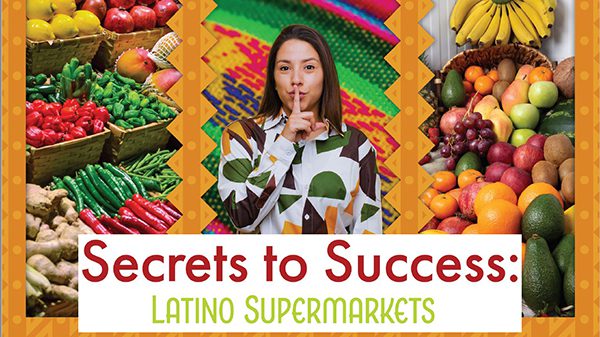How do Latin grocers maintain such a loyal customer base and continue to attract more shoppers?
Here are a few secrets to their ongoing success: they offer deep discounts, exceptional product variety, effective communication (meaning bilingual signage and staff), and create stores that feel like home.
In 2020, there are nearly 62 million Latinos living in the United States, accounting for more than 18 percent of the overall population. By 2060, according to some estimates, this number will rise to 29 percent.
Mexicans make up the largest group, about 62 percent, followed by Puerto Ricans, Salvadorans, Cubans, Dominicans, Guatemalans, and Colombians, whose numbers all run into the millions.
Latinos living in the United States are a culturally and geographically diverse segment of the population. A youthful one, too—more than half are 29 years old or younger and 46 percent of those who are immigrants have lived in the United States for at least 21 years.
More than 70 percent of U.S. Latinos speak English and, despite rumors to the contrary, the overwhelming majority, nearly 80 percent, are U.S. citizens.
But despite their different countries of origin, backgrounds, and customs, and even different degrees of fluency in English and Spanish, Latinos share a number of deep-rooted traditions, among them the importance of food: buying, cooking, and sharing it, and enjoying the ritual.
Not surprisingly, Latino supermarket retailers are well aware of this tradition, and continue to seize upon this opportunity.
Significant Demand, Significant Growth
Latinos account for 38 percent of the population in Texas, 31 percent in Arizona, 26 percent in Florida, and just over 20 percent in New Jersey.
What’s more, they make up a whopping 50 percent of the population of Los Angeles County.
And as the number of Latinos—particularly native-born, second-generation—has increased, so has demand for retailers offering the products and shopping experience these consumers are looking for.
This segment of the population also has rising buying power, and given the cultural importance of food, spends a healthy portion of this income at grocery stores that cater to their needs.
This represents an interesting shift in the retail landscape. In 2004, Latinos as a group spent $690 billion; in 2015, this number spiked at $1.3 trillion. This year (2020), they’ll spend an estimated $1.7 trillion—with many of these dollars earmarked for food.
According to a Research and Markets report, sales of Latino food and beverages were $17.5 billion in 2015. By 2021, sales are projected to soar past $21 billion.
The bottom line? Latinos, whatever their economic circumstances, spend consistently and with purpose, and retailers are racing to tap into and maintain this burgeoning market.
This is a multi-part feature adapted from a supplement to the September/October issue of Produce Blueprints magazine.



